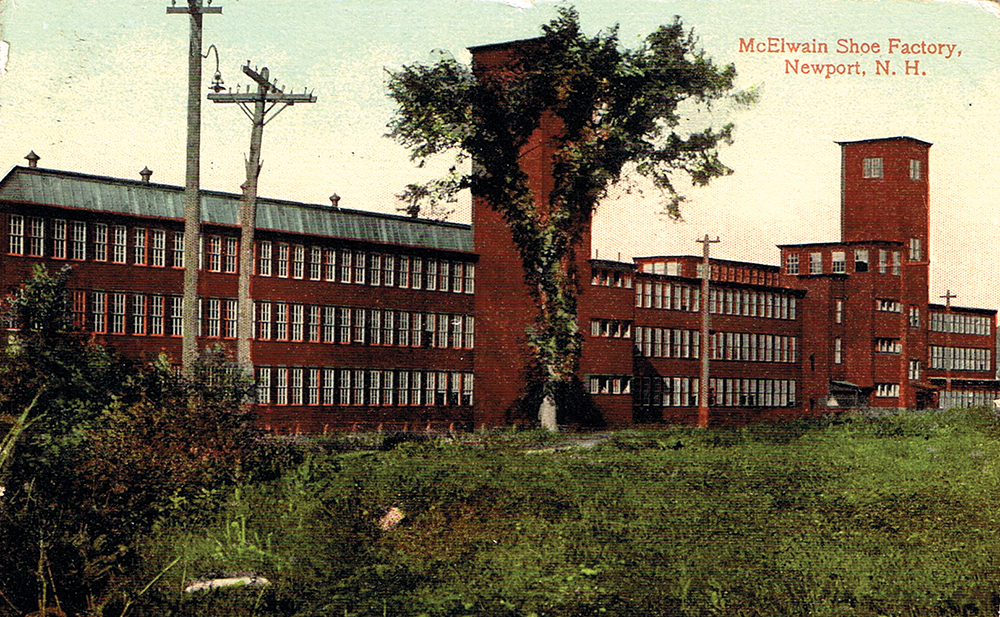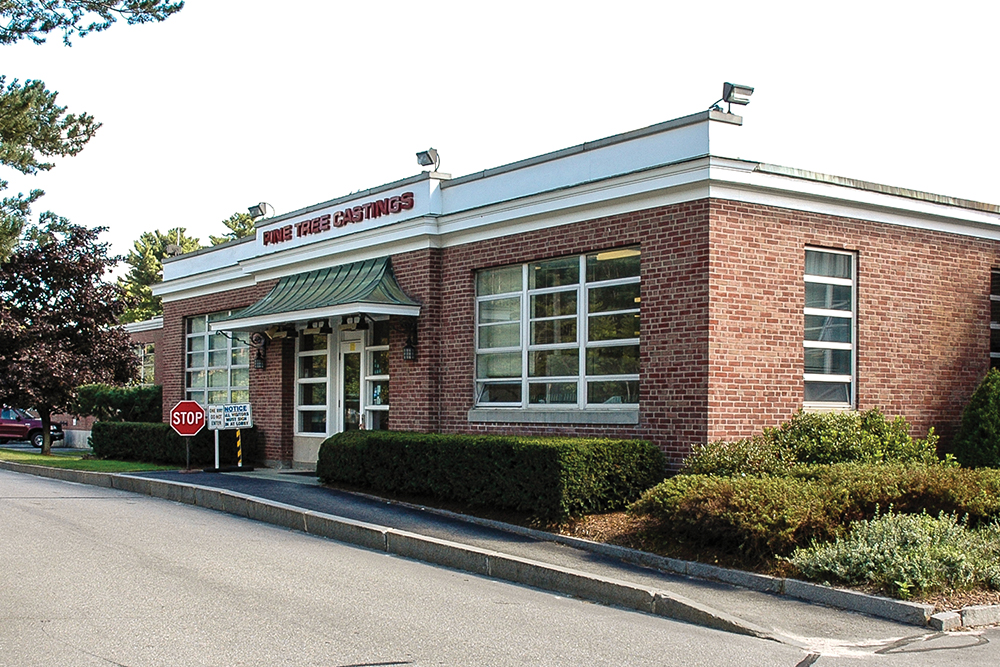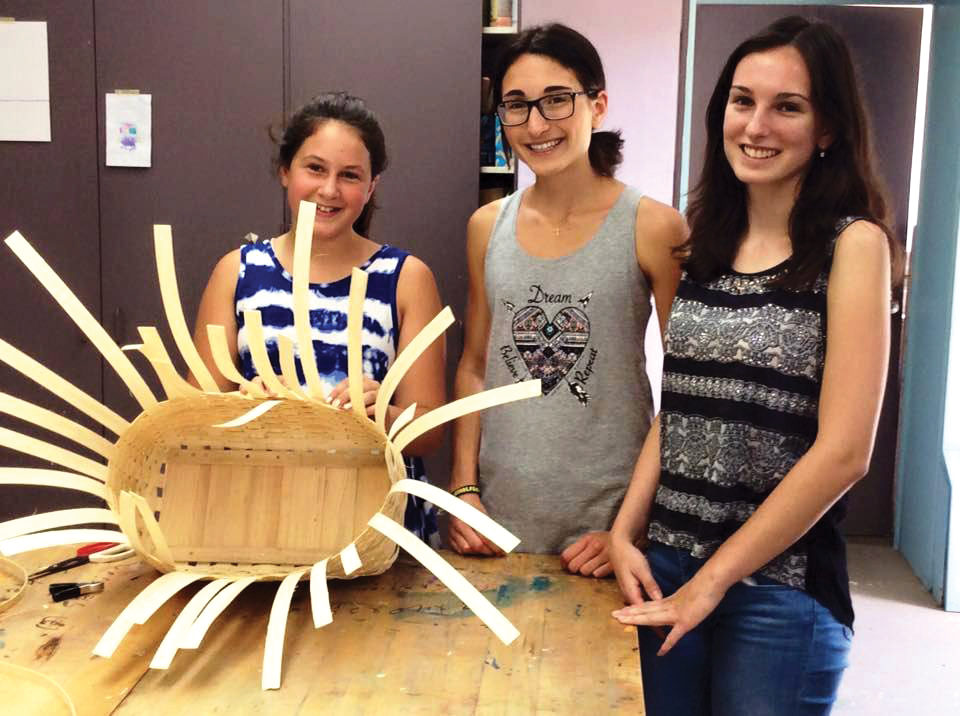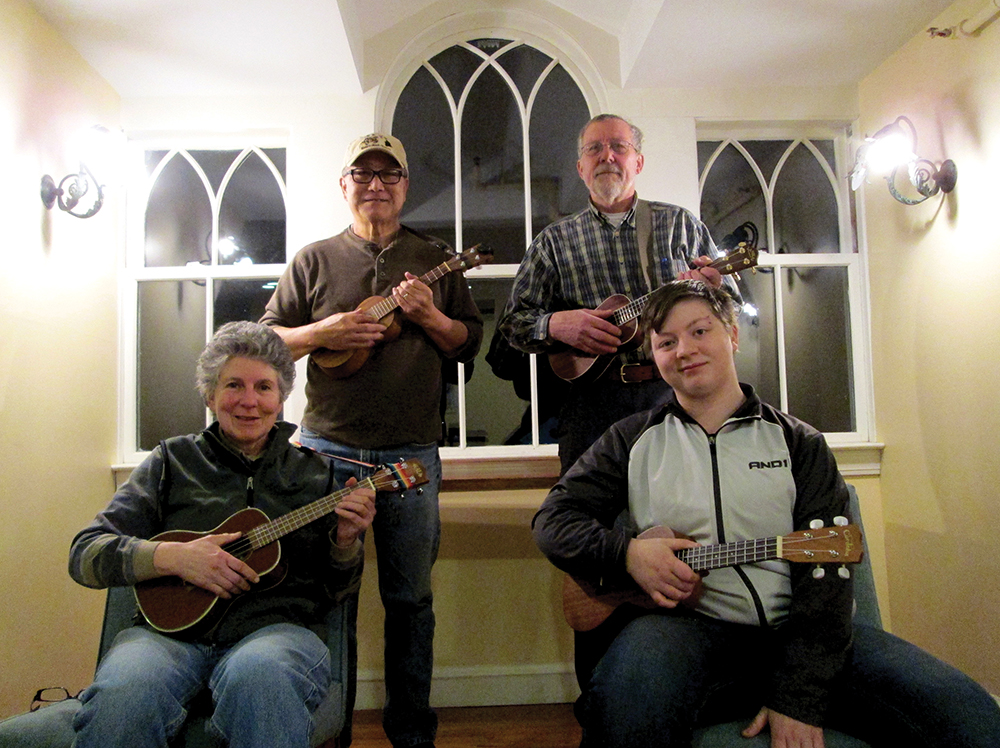
The town of Newport. Photo courtesy of Jay Lucas.
Newport, nicknamed “The Sunshine Town,” is turning to some traditional as well as unique ideas to brighten its economic future.
Town Manager Hunter F. Rieseberg, just two years on the job, and Jay Lucas, a prominent former resident who never lost his love for the place, are two of the key players in pushing to capitalize on the town’s manufacturing base.
Among their ambitions are more infrastructure improvements, industry diversification, and a New York-based internship for Newport students.
Already in the works is a new $15 million mixed-use development in a former mill, and this spring’s town meeting will ask voters to consider bonds for a proposed $6.6 million community center downtown.
Taken with the town’s pastoral appeal, vibrant arts scene and small-town geniality, such projects leave Newport poised for rebirth, community leaders say.
“We are indeed open for business,” says Rieseberg, who also heads the Economic Development Corporation of Newport (ECON). “The town has embarked upon a rather aggressive plan, or hope, of beginning to revitalize the community, and we are taking on a number of projects and initiatives to do that.”
Mark A. Pitkin, ECON vice president and president and CEO of Sugar River Bank, agrees that “there is a high level of excitement going on in the community.”
Moving the Economy Forward
Lucas wants to see the community return to its former vibrancy. He grew up in a house beside the library on Newport’s Town Common, represented the town in the Legislature for two terms, starting while still in college, and went on to become a partner at Bain & Co. before founding the business strategy consulting firm Lucas Group in 1991.
He is also a former Republican gubernatorial candidate, who lost to Jeanne Shaheen in 1998.
The Newport of his childhood was “what small-town America used to be,” he says, with “a beautiful Main Street that was just thriving. You couldn’t get a parking place on Main Street.”
That changed in a slow economic decline over the past 40 years, Lucas says, and when he and his wife drove through town more than a year ago and saw the number of vacant stores, he turned to her and said, “We’re going to revitalize Newport.” Lucas also laments the departure of the “independently owned, entrepreneurial stores” he remembers from childhood.
Selectmen Chair Jeffrey Kessler credits Rieseberg with much of the momentum now occurring in Newport. “Since Hunter came on board a little over two years ago, he has been a phenomenal driver in improving the economic outlook of the community,” Kessler says. “He instituted a lot of things that were not being addressed.”
Among Newport’s accomplishments under Rieseberg’s leadership, Kessler cites, switching streetlights to high-efficiency LEDs, demolishing three or four vacant buildings to put properties back on the tax rolls, and investing $400,000 in improvements for the town’s streets and sidewalks.
“Improving these areas doesn’t sound like much, but they improve the quality of life,” Kessler says.
That’s the whole idea, says Rieseberg. “It’s hard to get people excited about living here if your own house is not in order,” he adds. Rieseberg is also pursuing grants to remediate two long-ignored brownfield sites in town.
Rieseberg has revived some bigger-ticket items as well, including a proposed community center, which would replace an outdated and undersized recreation building. Kessler says the new facility would be located downtown, with about half of the $6 million-plus cost funded by donations. Voters will get their say on bonding for the project at May’s town meeting.
Lucas says he is also excited about the Newport Mills mixed-use development proposed for the former Ruger Mill on Sunapee Street. Envisioned are more than 40 units of senior independent living apartments, a medical office, and a restaurant overlooking the river. The project could also include a riverwalk connecting Newport Mills with Main Street.
According to Liz Emerson, town planning and zoning administrator, developer Ron DeCola has already received the necessary permits and has three years in which to start construction.
The Sunshine Initiative
Adding to the momentum is The Sunshine Initiative, a grassroots coalition launched by Lucas just over a year ago to stimulate revitalization.
The group borrows its name from the “Sunshine Town” moniker, coined from an early 20th century vaudeville performer, William Vandergrift (stage name, Billy B. Van) who once proclaimed that “in Newport, the sun shines on both sides of the street all the time,” according to Lawrence Cote, director of the Newport Historical Society Museum.
The name befits the “positive energy” the initiative is seeking to bring, Lucas says.

Jay Lucas speaks at a meeting of The Sunshine Initiative. Courtesy photo.
The Initiative began with a series of community meetings, at first attracting only a handful of people, with now close to a hundred. One of the first programs was RISE, or Reimagining Student Education, an online training program in which three entrepreneurial firms in New York City train 20 students in Newport in web design and code.
After the 12-week program, “they’re eligible to work with these same firms, but they don’t have to leave Newport,” Lucas says. “It helps people in Newport participate in the global digital economy.”
Current participants include high school students, single mothers and high school graduates looking for more opportunity, according to Lucas. As of late January, that first class was midway through the program.
Diversifying the Economy
Unemployment in town remains low–2.3 percent in 2017, according to the NH Employment Security office—but Lucas and others see such programs as providing opportunities outside manufacturing to the workforce. “One of the things I’m proudest of is, we’re thinking out of the box,” he says.
The scenic town of 6,500 on the banks of Sullivan County’s Sugar River has an economic history similar to that of many New England communities.
Settled in 1766 by farmers, it later became a thriving mill town as water from the river helped power three woolen mills and two tanneries. As with so many communities that saw factories close due to less expensive energy and manpower farther south, Newport’s mills started a downward slide around 1920, according to Cote.
Shoe shops came in around 1950, Cote says, but they paid lower wages and closed within a couple decades.

The McElwain Shoe Factory building. Courtesy of the Newport Historical Society.
Then came firearms manufacturer Sturm Ruger & Co., which opened in the 1960s and remains Newport’s largest employer, with a workforce of more than 1,000. A handful of building component and machine parts plants, two banks, a health care center and a Shaw’s supermarket round out the top 10 employers in town.

The Pine Tree Castings building at Sturm Ruger & Co. Courtesy photo.
Steve Schneider, executive director of the Upper Valley Lake Sunapee Regional Planning Commission, says Newport is trying to diversify its economy while still recognizing Ruger as “a fantastic resource.”
A former town manager of Enfield, Schneider sees a danger in having “all your economic eggs in one basket.” He adds, “If Ruger were to leave, it would have a major impact.”
Marketing the Community
Newport is also working to get its revitalization story beyond its borders. A new economic development director, Cody Morrison, started in January and is expected to help market the community.
The aim is to have him “get to know our businesses better, get to know their needs, attract and expand new business, and develop our school-to-work program, where kids coming out of high school can go and learn a trade and have a job when they graduate,” Rieseberg says.
That school-to-work program, which does not have an official name, is a partnership between the school district and the economic development office that connects students with internships as a pathway to work after graduation. It will be helpful in a community where two-thirds of high school graduates do not go on to higher education, says Lucas, who credits School Superintendent Cindy Gallagher with helping to advance the plan.
Morrison’s position is being funded by six entities: the town, the school district, ECON, Lucas, the Roy Malool Family Foundation and LaValley Building Supply.
An Eye to the Future
Meanwhile, other town enhancements are on the drawing board. This spring construction is planned for a solar array that will generate more than enough electricity to offset Newport’s municipal needs, according to Rieseberg.
The Sunshine Initiative is working on a plan to provide “upscale buses with Wi-Fi” to transport local workers to high-paying jobs in the nearby Hanover-Lebanon area, says Lucas. He adds that he has been working to recruit several firms to the downtown area and is “quite optimistic” that he can make an announcement about them later this year.
His group is also planning what he calls “the first-annual Newport Jazz Festival,” not to be confused with the Rhode Island version, as part of an October event marking the 25th anniversary of the reconstruction of the Corbin Covered Bridge.
At community insistence, the bridge—built around 1835 and destroyed by arson in 1993—was rebuilt as a wooden bridge rather than as a state-funded modern bridge. Newport is home to two of the last remaining eight North American covered railroad bridges still standing.
Traditions Make the Community
Newport, an arts-minded community, often celebrates its heritage with its “Currier and Ives-looking” ice rink on the common, as Rieseberg calls it, and its historic Opera House, built in 1886 and the site of suffragists rallies, and today hosting youth Shakespeare programs.

The East side of Main Street, including the Newport Opera House, built in 1886. Courtesy of the Newport Historical Society.
Newport is also home to the oldest continuous winter carnival in the country, according to the town website.
Newport’s Richards Free Library houses an arts center that provides a venue for artisans to show their work, according to Library Director Andrea Thorpe. It also provides space for other cultural offerings, including classes with renowned basket maker Ray Lagasse, workshops and a ukulele club.

The library arts center provides a venue for cultural offerings including basket making classes, above, and a ukulele club, below.
At Easter time, the town forgoes an egg hunt in favor of a candy drop from an airplane at the local Parlin Field Airport.
An annual Apple Pie Craft Fair, free Sunday night concerts, and farmers markets are additional attractions, as are the three ski jumps, numerous hiking trails and fly-fishing in Sugar River.
“Newport is a place that has a lot of traditions and we honor those traditions,” Thorpe says.
Among them is the annual awarding of the Sarah Josepha Hale Medal, named after the former Newport resident who wrote the poem “Mary Had a Little Lamb” and who is credited with persuading Abraham Lincoln to make Thanksgiving a national holiday. The medal is awarded by the trustees of the Richards Free Library to a New England resident distinguished in literature. Robert Frost was the first recipient in 1956.
Town leaders say such traditions make the town inviting as much as any economic initiative. “A lot of factors go into why businesses relocate in a particular area or choose to expand, and one of them is quality of life and we’ve got that in spades in the western part of the state,” says Schneider.
Thorpe notes that the town last year hosted two “kindness events” on the common, during which people wore buttons that said, “Just be kind.” Rieseberg, with 40 years in public administration, says he has “never encountered a community more welcoming and passionate about their hometown.”
He says when he encounters people who have lived in Newport their whole lives and he asks them why, “they kind of tilt their heads to one side like the RCA dog and they say, ‘Why would I live anywhere else?’”

 Current Issue - April 2024
Current Issue - April 2024